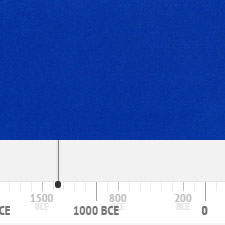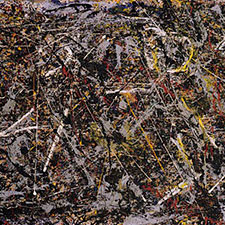Phthalocyanine Blue
Synthetic organic pigmentComposition and Properties of Phthalocyanine Blue
Phthalocyanine blue is a modern synthetic organic pigment with the following formula:

The pigment is unaffected by heat and chemicals and is extremely lightfast.
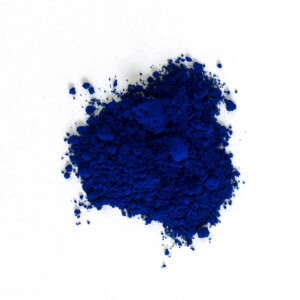
Pigment
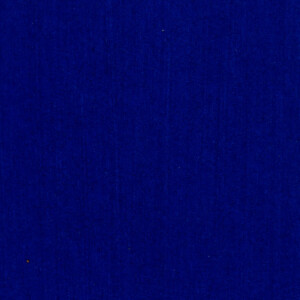
Painted swatch
Video: 'Phthalo Blue (Green Shade) - Winsor & Newton' by Liron Yankonsky
Names
Alternative names
Helio blue, astral blue, thalo blue
Color Index
PB 15, CI 74160
Word origin
Phthalic is a shortening of the word naphthalic from oriental naphtha = oil, -cyanine from Greek kuanos = dark blue.
Phthalocyaninblau
German
Bleu de phtalocyanine
French
Blu ftalocianina
Italian
Azul de ftalocianina
Spanish
Preparation of Phthalocyanine Blue
Phthalocyanine blue is prepared by heating a mixture of phthalic anhydride, urea, and copper chloride. The product is first washed in dilute caustic soda and then in dilute hydrochloric acid. It then becomes copper-phthalocyanine but is not conditioned as a pigment until it is dissolved in concentrated sulfuric acid and carefully washed in excess water and filtered.
Video: 'Synthesis of Copper Phthalocyanine' by UC 235
Video: 'Synthesis of Copper Phthalocyanine' by Texium
History of Use
Phthalocyanine pigments were developed around the 1930s and have been widely used in many areas besides artists’ pigments. The excellent colouristic properties have earned them a place on the palette of many well-known painters such as Kandinsky, Yves Klein, Barnett Newman, Roy Lichtenstein, Jackson Pollock, etc.
Barnett Newman, Who’s Afraid of Red, Yellow and Blue III, 1967-68, collection Stedelijk Museum Amsterdam.
References
(1) Defeyt, Catherine and Strivay, David, PB15 as 20th and 21st Artists’ Pigments: Conservation Concerns, in E‐Preservation Science (2014), 11. Available as pdf.
(2) Video: The Discovery of a New Pigment-The Story of Monastral Blue by Imperial Chemical Industries, colorantshistory.org
Identification
Fiber Optics Reflectance Spectrum (FORS)

Spectra by A. Cosentino, Cultural Heritage Science Open Source (CHSOS)
Infrared Spectrum
Raman and IR-Spectra in the CAMEO Materials Database, Museum of Fine Arts Boston
Raman Spectrum
Raman and IR-Spectra in the CAMEO Materials Database, Museum of Fine Arts Boston
X-Ray Fluorescence Spektrum (XRF)
References
(1) C. Defeyt, P. Vandenabeele, B. Gilbert, J. Van Pevenage, R. Cloots and D. Strivay, Contribution to the identification of α-, β- and ε-copper phthalocyanine blue pigments in modern artists’ paints by X-ray powder diffraction, attenuated total reflectance micro-fourier transform infrared spectroscopy and micro-Raman spectroscopy, Journal of Raman Spectroscopy, Volume 43, Issue 11, November 2012 (pages 1772–1780) DOI: 10.1002/jrs.4125.
(2) Alice Dal Fovo et al., Multianalytical non-invasive characterization of phthalocyanine acrylic paints through spectroscopic and non-linear optical techniques, Spectrochimica Acta Part A: Molecular and Biomolecular Spectroscopy 208 (2019) 262– 270.
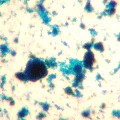
Microphotograph
image © Volker Emrath
Further Reading
References
(1) Video: The Discovery of a New Pigment-The Story of Monastral Blue by Imperial Chemical Industries, colorantshistory.org
(2) P. Erk, H. Hengelsberg: Phthalocyanine Dyes and Pigments in Porphyrin Handbook 19 (2003), p. 105–149.
(3) S. Muntwyler, J. Lipscher, HP. Schneider, Das Farbenbuch, 2nd. Ed., 2023, alataverlag Elsau, pp. 222-23.

